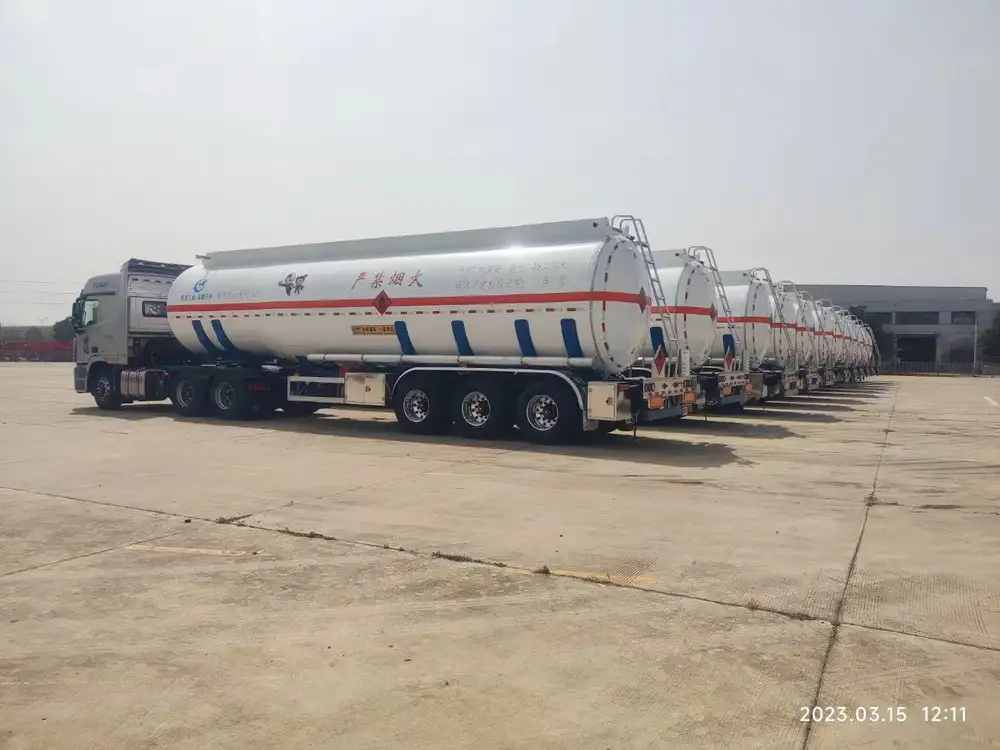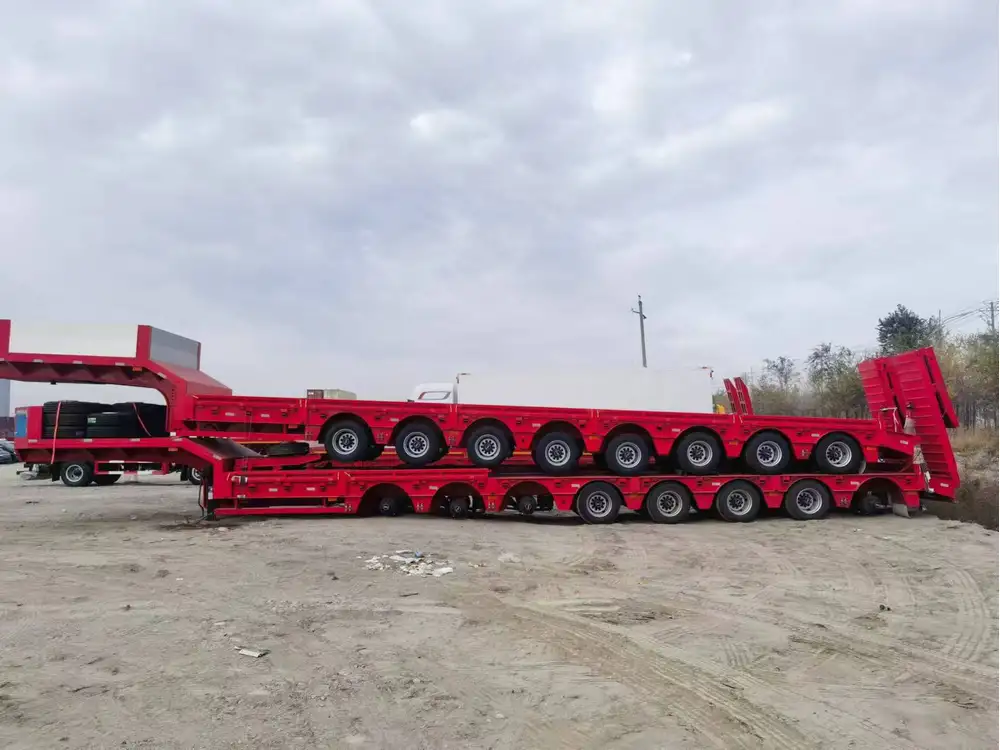Transporting railroad wheel sets on flatbed trailers presents unique challenges due to the weight, dimensions, and specific securing requirements associated with these heavy-duty components. This detailed guide outlines effective methods for securely transporting railroad wheel sets, ensuring safety and compliance while minimizing the risk of damage during transit.
Understanding Railroad Wheel Sets
Before we delve into the securing processes, it’s essential to understand the fundamental components involved:
| Component | Description |
|---|---|
| Wheel | A circular object that enables movement, typically made of steel. |
| Axle | A central shaft for rotating the wheels; usually a solid steel rod. |
| Bearing | Supports the rotation of the wheel on the axle. |
The combination of these elements forms a railway wheel set that is heavy, often weighing several tons. Given the potential dangers associated with improper securing methods, it is crucial to employ effective strategies.
Key Safety Considerations

Weight Distribution
Ensuring even weight distribution across the flatbed trailer is paramount. Distributing weight correctly prevents trailer sway and maintains load stability. Here are essential practices:
- Place the wheel set centrally on the trailer to balance the load.
- Utilize trailer features, such as tie-down points and winch tracks, effectively.
Regulation Compliance
Stay updated with local and federal transportation regulations such as the Department of Transportation (DOT) guidelines. Failing to meet safety standards can result in penalties and liabilities.
Equipment Inspection
Before loading, conduct thorough inspections of both the trailer and the wheel sets:
- Check for any signs of wear or damage in securing equipment.
- Ensure the trailer’s condition can handle the load.

Step-by-Step Loading Process
1. Preparation
- Instruments: Gather necessary securing tools such as ratchet straps, chains, and edge protectors.
- Clear the Area: Ensure that the loading area is free from hazards and well-lit.
2. Lifting the Wheel Set
Utilize appropriate lifting equipment:
- Use a forklift or crane if available to lift heavy wheel sets safely.
- Ensure all operators are trained and follow safety protocols.

3. Placing the Wheel Set
Carefully position the wheel set on the flatbed:
- Alignment: Ensure the wheel sets are properly aligned with the trailer’s longitudinal axis.
- Clear Space: Maintain adequate space from the trailer edges to prevent overhang.
4. Securing with Straps
Utilize high-strength ratchet straps or chains to secure the wheel sets:
Ratchet Straps
- Choose Straps: Opt for straps rated for at least 4,000 lbs working load limit.
- Positioning: Place straps over the wheel and axle, ensuring they are not twisted.
- Ratchet Down: Tighten the ratchet straps evenly to secure the load without risking damage to the wheel sets.

Chain Securing
- Use Heavy-Duty Chains: Consider chains rated for heavy loads that can withstand the weight of the wheel sets.
- Anchor Points: Attach chains to designated anchor points on the flatbed.
- Tensioning: Ensure proper tension is applied to avoid slack, which can cause movement during transit.
| Securing Method | Advantages | Disadvantages |
|---|---|---|
| Ratchet Straps | Quick to deploy; flexible | Can loosen over time without tension |
| Chains | Extremely robust | Heavy and may require more effort |
5. Adding Edge Protectors
To prevent damage to both the wheel sets and securing equipment, use edge protectors:
- Material Options: Use rubber or plastic edge protectors to cover sharp edges.
- Placement: Position protectors at points of contact to distribute tension and avoid abrasion.
6. Final Checks
Conduct a thorough checklist before hitting the road:
- Tension Check: Verify that all straps and chains maintain proper tension.
- Visual Inspection: Inspect the wheel set and securing mechanisms for any potential issues.
- Legal Compliance: Ensure compliance with all required local and federal transport regulations.

Transporting the Flatbed Trailer
Driving Protocols
Adhere to the following guidelines when transporting:
- Speed Regulations: Abide by the speed limits applicable to heavy loads.
- Driving Conditions: Adjust driving style according to weather conditions; avoid sudden movements.
- Regular Stops: Make periodic checks to ensure the load has not shifted and securing mechanisms remain intact.
Dealing with Transit Challenges
Being aware of potential challenges can save you time and avoid costly mishaps:
- Weather Conditions: Rain, snow, or ice can affect traction and stability. Drive cautiously.
- Road Conditions: Stay alert for potholes and uneven surfaces that may affect load stability.

Emergency Protocols
Prepare yourself for unforeseen challenges:
- Emergency Contacts: Always have a list of emergency contacts handy, including roadside assistance.
- Backup Equipment: Keep additional securing gear onboard in case an emergency requires replacement or adjustment.
Unloading the Wheel Set
Once you arrive at your destination, follow a systematic approach to unload safely:
1. Area Preparation
Ensure the unloading zone is clear and adequately marked.

2. Unfastening
Follow reverse order of the fastening process to avoid risks:
- Debrant Straps/Chains: Loosen and remove securing equipment without twisting or jerking.
- Equipment Assistance: Use a forklift or crane again to handle the heft of the wheel set.
3. Final Inspection
Once the unloading is complete, conduct a final inspection of the wheel sets for any damage and note any issues for further maintenance.
Conclusion: Elevating your Transportation Game
Securing railroad wheel sets on flatbed trailers requires meticulous planning, execution, and adherence to safety protocols. By meticulously following the outlined steps – from preparation and securing to transport and unloading – transporters can ensure not only the safety of their loads but also their compliance with transportation regulations. Ultimately, maintaining consistent standards in securing practices can elevate your transportation game, reducing risks and improving efficiency.

Additional Resources
For further information, consider the following resources:
- Department of Transportation Guidelines: www.transportation.gov
- Safety Protocols in Transporting Heavy Loads: www.safetytips.com
- Industry Best Practices for Securing Loads: www.loadsecurement.com
By implementing best practices and continually reviewing safety protocols, you ensure that every transport of a railroad wheel set is executed with precision, responsibility, and care.



